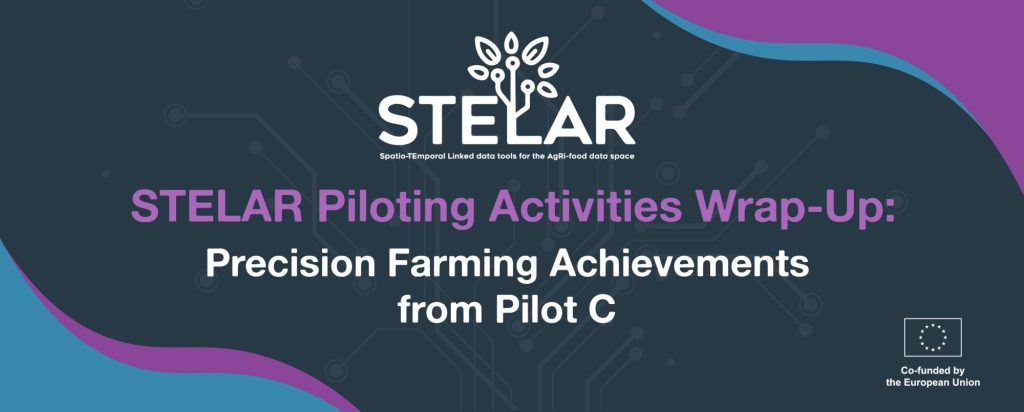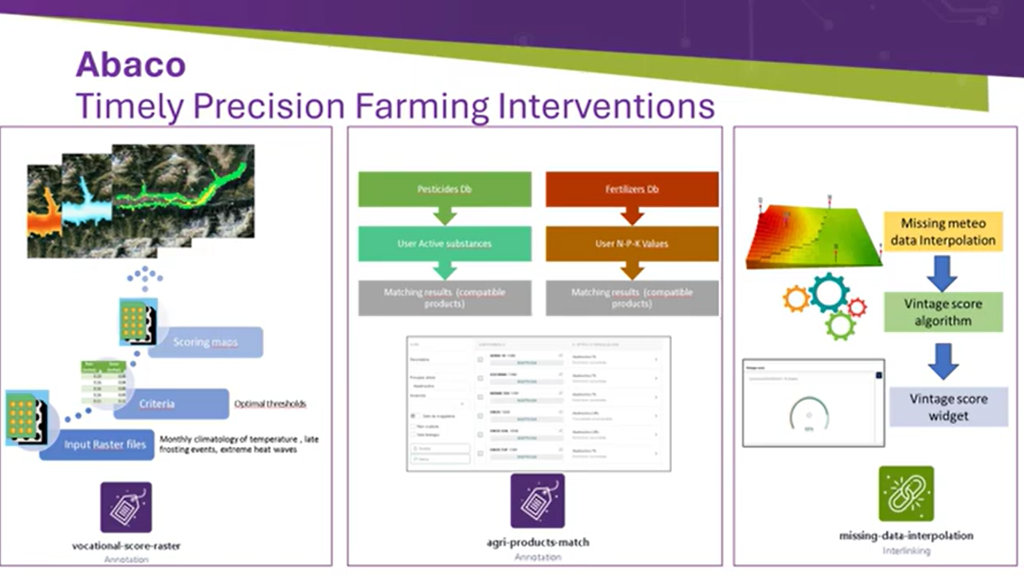STELAR Piloting Activities Wrap-Up – Precision Farming Achievements from Pilot C

The Horizon Europe project STELAR is nearing its conclusion after three years of collaborative work this August. The project has developed a platform for publishing and discovering metadata related to datasets in the agrifood sector, and for linking those datasets with data-processing workflows for machine learning and AI applications.
STELAR has also developed a state-of-the-art platform and tools for extracting structured information from food safety reports, and for fusing satellite and field-sensor data to improve crop classification, yield prediction, and suitability map construction.
Across its lifespan, STELAR validated solutions through three Pilots, each addressing a distinct agricultural need. This blog focuses on Pilot C, led by ABACO (Italy), which explores how data can support timely precision farming interventions so farmers plan and manage crops based on real conditions rather than assumptions.

Pilot C Focus: Timing Interventions with Integrated Data
In modern agriculture, timing matters. Pilot C combines earth observation data with farm-level records to help producers act at the right moment, improving planning and day-to-day crop management.
Simone Parisi, Data Scientist at ABACO, explained the Pilot’s three use cases and how they are useful for the needs of ABACO’s customers and future users of the solution.
“First of all, one use case involves a tool to link the Italian and European phytochemical databases. The aim is to harmonise active substance names across languages and jurisdictions, so producers operating in multiple countries can apply consistent treatment protocols everywhere they work,”
Simone Parisi, Data Scientist at ABACO and member of the STELAR project consortium
The second use case helps apple producers identify where apples of the same quality can be grown beyond current plots. “We provide a tool to identify where apples of the same quality can be produced, beyond their current plots. It takes into account variables such as temperature, rainfall, altitude, and solar radiation, and generates vocational maps that show how well an area is suited for apple cultivation. This can be fully adapted to local conditions,” Parisi says.
The third use case concerns the wine sector. “We developed a vintage score calculator – a quality index ranging from 0 to 100 that forecasts grape quality before harvest. This helps producers and oenologists decide where to focus their efforts and which vineyards to prioritise,” says Parisi.
Watch the video about Pilot C below.
Next Steps: Broadening Impact and Adoption
As STELAR concludes, the project is preparing for wider uptake beyond the pilot environments. Planned actions include engaging policymakers on data transparency and interoperability, refining tools through ongoing user feedback, and strengthening open-source collaborations to support adoption. The consortium will also explore integration with emerging AI technologies, helping ensure the solutions remain relevant and scalable across diverse agrifood contexts.
Collaboration Across Europe
Pilot C was led by ABACO (Italy), with contributions from Athena Research Center (Greece), University of Athens (Greece), and Foodscale Hub (Serbia), while the STELAR consortium is made up of additional 5 partners and is led by Athena Research Center from Greece.
Foodscale Hub lead the project’s Dissemination, Exploitation and Communication activities, while also supporting pilot preparation, KPI development, and ecosystem synergies to ensure sustainability of results.
For more information about Pilot C and the STELAR project, visit stelar-project.eu and follow STELAR on LinkedIn for updates.